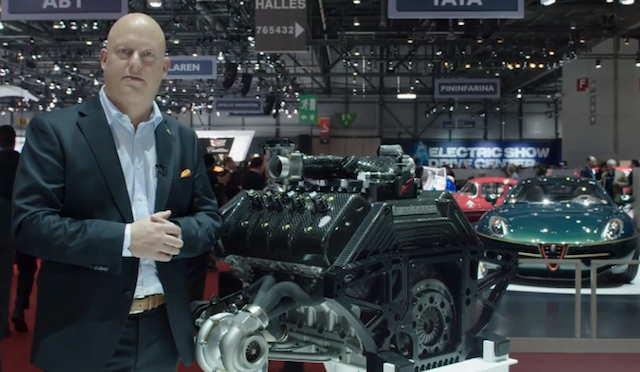Christian von Koenigsegg Explains the Magic Behind The One:1’s Turbos

Oh how far we’ve come. Turbos used to be associated with laggy response, complexity, and unreliability. Putting a turbo on your V8 meant you were a hardcore drag racer or Bonneville competitor. It was like a badge that said, “Crazy. Balls.”
Today, they’re the answer for everything. Want big power from an LS engine? Put a turbo on it. If an OEM needs to raise MPG and horsepower for their anything? Put a turbo on it. It’s the gasoline version of the Portlandia segment, “Put a bird on it!” And everyone is doing a very good job. Turbo BMWs, for example, make peak torque a little above idle. Excellent.
Turbos are essential to the new hyper cars and some “regular” super cars, like the 12C. Since you can buy a Mustang with more power than a Lamborghini LP640, forced induction is the only way the most expensive tire-shod spaceships can stay out front. Today’s example is the upcoming Koenigsegg One:1, a car so fast and light they named it twice.
Koenigsegg have been steadily advancing their technology like a Roman army. They’ve developed new suspension systems, wheels, electronically-controlled valves (which could seriously change what is possible with NA engines), and now 3D-printed turbos. They’ve chosen a variable-vane turbo for the One, which shouldn’t surprise anyone who knows anything about the Porsche Turbo. Variable-vane turbines spool up fast but don’t run out of flow in upper RPMs; Here’s a piece of cake to eat, and one to hold. How they made it variable, and how they made it at all, is—of course- new. Christian explains in the video below.
Zack Klapman is a Senior Editor for The Smoking Tire, and produces “TUNED” and “BIG MUSCLE” on the /DRIVE Network. He can be found on Twitter.
